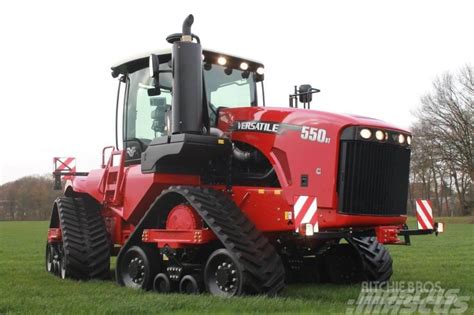For many men, the gym is a versatile battleground – a place for intense strength training, grueling cardio sessions, and everything in between. But when it comes to footwear, this versatility presents a dilemma: should you prioritize the rigid stability crucial for heavy lifts, or the cushioned comfort essential for running? The answer isn’t always straightforward, and understanding the core differences can help you make an informed decision for your fitness journey.
Understanding the Core Dilemma
At its heart, the conflict between lifting stability and running comfort stems from fundamentally opposing design philosophies. Lifting shoes are engineered to minimize movement and provide a stable, grounded platform, while running shoes are built to absorb impact, promote natural foot movement, and offer responsive cushioning.
Wearing the wrong shoe for your primary activity can not only hinder performance but also increase the risk of injury. A soft, cushioned running shoe during a heavy squat might feel unstable, potentially leading to a loss of balance or inefficient power transfer. Conversely, a rigid, flat-soled lifting shoe on a long run would offer little impact absorption, leading to discomfort and potential strain.

The Case for Lifting Stability
When you’re performing compound lifts like squats, deadlifts, or overhead presses, stability is paramount. A stable base allows you to generate maximum force and maintain proper form, protecting your joints and optimizing muscle engagement. Key features of a good lifting shoe include:
- Flat, Hard Sole: Minimizes compression, providing a direct connection to the floor. This prevents energy loss and ensures a stable platform for powerful movements.
- Elevated Heel (for Olympic lifting): Often seen in dedicated weightlifting shoes, a slightly raised heel (typically 0.5 to 1 inch) can improve ankle mobility, allowing for deeper squats and a more upright torso.
- Wide Toebox: Allows your toes to splay naturally, creating a broader base of support and better balance.
- Minimal Cushioning: Any cushioning would absorb some of the force you’re trying to transfer to the ground, making the lift less efficient.
- Secure Midfoot & Ankle Support: Straps or a snug lacing system ensure your foot is locked into place, preventing internal movement during heavy loads.

The Appeal of Running Comfort
For cardio, especially running, the primary concern shifts dramatically to impact absorption and efficient forward motion. Running shoes are designed to cushion your foot strike, protect your joints from repetitive stress, and facilitate a smooth stride. Essential characteristics include:
- Ample Cushioning: Midsoles are typically made from EVA foam, Boost, or other proprietary materials designed to absorb shock and provide energy return.
- Flexibility: The sole and upper are designed to flex with your foot’s natural movement during the gait cycle, from heel strike to toe-off.
- Lightweight Design: Reduces fatigue over longer distances, making each stride feel easier.
- Breathable Upper: Mesh or knit materials promote airflow, keeping your feet cool and dry.
- Support & Stability (for specific needs): While comfort is key, some running shoes also offer varying degrees of stability to correct pronation.

Finding Your Balance: Prioritizing Your Workout
So, how do you decide what to prioritize? The answer largely depends on your primary gym activities. Consider the following scenarios:
- Primarily a Lifter (Heavy Strength Training, Powerlifting, Olympic Weightlifting): If the majority of your gym time is spent under a barbell, investing in a dedicated pair of lifting shoes will yield significant benefits in performance and safety. You can always do light cardio in them or change into minimal running shoes for a quick warm-up.
- Primarily a Runner (Treadmill, Track, Outdoor Running): If your focus is logging miles, a quality pair of running shoes is non-negotiable. They will protect your joints and enhance your running efficiency. For light bodyweight exercises or machine work, these shoes are often sufficient, but avoid heavy squats or deadlifts.
- Hybrid Trainer (Mix of Strength, Cardio, HIIT, Cross-Training): This is where the decision becomes trickier. Many people fall into this category, performing a mix of activities. For them, a good pair of cross-training shoes is often the best compromise.

Specialized vs. All-Rounder: Making Your Choice
Dedicated Shoes: For peak performance in either lifting or running, specialized shoes are always the superior choice. If your training is highly specific, having two pairs of shoes (one for lifting, one for running) is the ideal solution.
Cross-Training Shoes: These shoes aim to bridge the gap by offering a blend of features. They typically have a flatter, firmer sole than running shoes for some stability during lifts, but still provide enough cushioning and flexibility for short runs, box jumps, and agility drills. Look for:
- A relatively flat, low-to-the-ground profile.
- A firm but not entirely rigid midsole.
- Good lateral support for side-to-side movements.
- A durable upper to withstand varied activities.
- A moderate amount of cushioning that can handle short runs (e.g., 1-2 miles).

Conclusion
Ultimately, the best men’s gym shoes for you depend on a clear understanding of your fitness goals and the activities you perform most frequently. While dedicated shoes offer optimized performance for specific tasks, a high-quality cross-training shoe can be an excellent all-rounder for those with a varied workout regimen. Assess your priorities, consider your comfort, and invest in footwear that supports your training safely and effectively.




